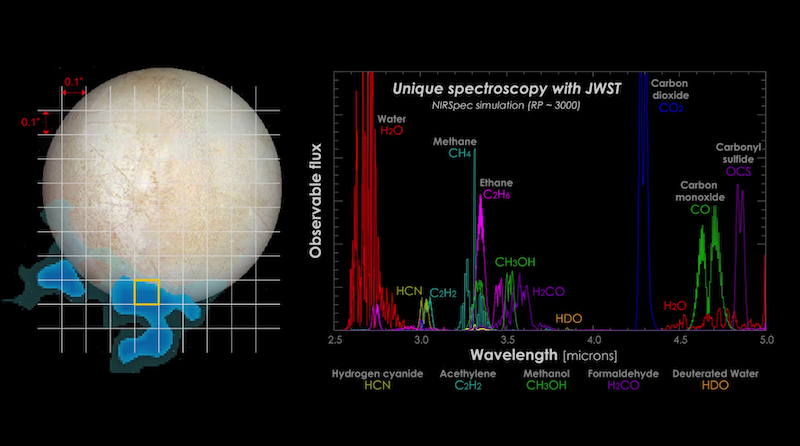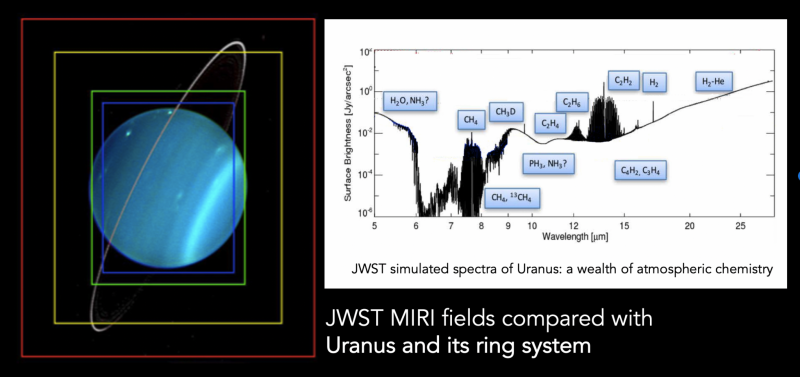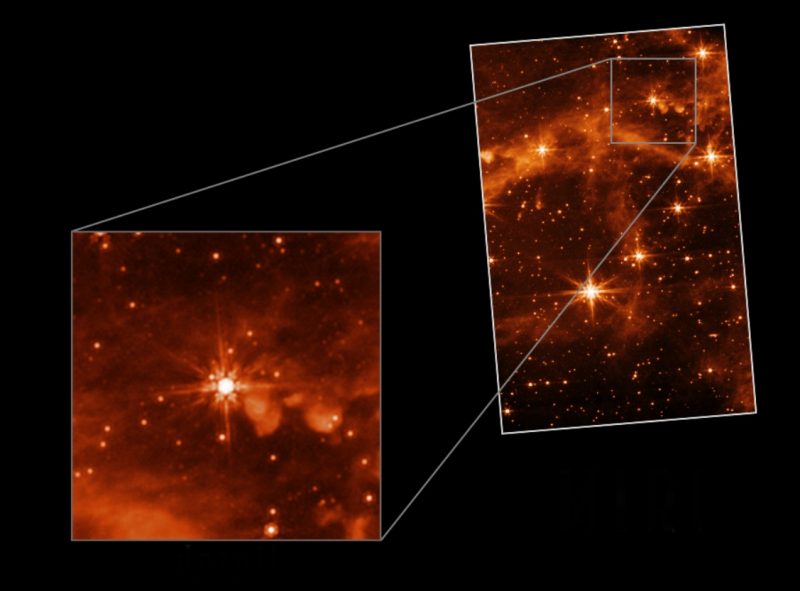
Exploring the solar system with Webb
We are getting closer and closer to when NASA’s Webb telescope will begin observing the universe. NASA announced in a new blog post from Thaddeus Cesari on May 19, 2022, that they’re in the final phases of commissioning. Webb images and other data will be unprecedented, even better than from Hubble. Webb will study distant stars, galaxies, exoplanets and other cosmic objects and phenomena. But, did you know that it can also observe objects within our own solar system? Webb will be able to look at planets, moons, asteroids and comets, too!
Once the final phases of commissioning the science instruments are complete, Webb can start to track these objects. It will observe them with extreme precision as they move across the background stars. In doing so, the telescope can obtain images and spectra of those objects.
Tracking test successful
Along with the other instrument commissioning, the Webb team just finished its first test of Webb’s tracking capabilities. And it was a success! Now, a variety of deep-space objects will be tracked in additional testing. The NASA blog post quoted Heidi Hammel, a Webb scientist specializing in solar system observations:
I am really excited about Webb’s upcoming first year of science operations! I lead a team of equally excited astronomers eager to begin downloading data. Webb can detect the faint light of the earliest galaxies, but my team will be observing much closer to home. They will use Webb to unravel some of the mysteries that abound in our own solar system.
We have been planning for Webb observations for over 20 years, and that has gone into overdrive now that we are launched, deployed, and focused! I’ll note that nearly all of my team’s solar system data will be freely available to the broad planetary science community immediately. I made that choice to enable more science discoveries with Webb in future proposals.
Hammel is also Vice President for Science at the Association of Universities for Research in Astronomy (AURA).

Why Webb is needed
Webb is the most powerful space telescope ever built. Which is why, of course, it will provide unsurpassed views of the universe. But why is it needed to study the solar system, when there are robotic spacecraft already doing so?
The answer is that astronomers use telescopes as a complement to the spacecraft missions. For example, as Hammel noted, they can spot other objects that a spacecraft might not be able to. A good example is when scientists used Hubble to find the next target for the New Horizons mission to Arrokoth. This was the next object in the Kuiper Belt that New Horizons visited, long after it flew past Pluto in 2015. And now, scientists are using telescopes to look for additional future targets for New Horizons, as well.
Also, there are some objects where no spacecraft has visited recently or will be visiting in the near future. The planets Uranus and Neptune are prime examples. The Voyager 2 probe made the last in-situ observations of both worlds in the late 1980s. Webb will look at these planets and their moons in great detail. In particular, the telescope will be able to analyze the chemistry of the upper atmosphere of Uranus.
In addition, Webb will observe smaller objects like asteroids, including ones in the Kuiper Belt.

Solar system mysteries
As Cesari quoted Hammel:
Our solar system has far more mysteries than my team had time to solve. Our programs will observe objects across the solar system: We will image the giant planets and Saturn’s rings; explore many Kuiper Belt objects; analyze the atmosphere of Mars; execute detailed studies of Titan; and much more! There are also other teams planning observations; in its first year, 7% of Webb’s time will be focused on objects within our solar system.
Europa’s plumes
One of the most exciting solar system targets is Europa’s possible water vapor plumes. Webb can take spectroscopic measurements of the plumes, providing clues as to conditions in the subsurface ocean (or possible lakes in the crust). This is similar to how the Cassini spacecraft sampled the plumes of Saturn’s moon Enceladus and analyzed them. Hammel said:
One exciting and challenging program we plan to do is observe ocean worlds. There’s evidence from the Hubble Space Telescope that Jupiter’s moon Europa has sporadic plumes of water-rich material. We plan to take high-resolution imagery of Europa to study its surface and search for plume activity and active geologic processes. If we locate a plume, we will use Webb’s spectroscopy to analyze the plume’s composition.
That would be exciting, and the data would be valuable to have before the Europa Clipper probe arrives there. Europa is a fascinating world, and scientists think its subsurface ocean may be quite habitable.
TRAPPIST-1: habitable worlds?
Webb will be fully tested and ready for science observations this summer. And speaking of solar systems, one of its most exciting early targets will be the seven Earth-sized planets in the TRAPPIST-1 system. All of them are rocky and close in size to Earth. Could any of them support life?

Bottom line: The greatly anticipated Webb telescope will be able to observe objects in our own solar system, as explained in a new NASA blog post. While primarily studying distant stars, galaxies, exoplanets and other cosmic objects and phenomena, it will also be able to look around our own neighborhood, as well.
The post How Webb will explore our own solar system first appeared on EarthSky.
0 Commentaires